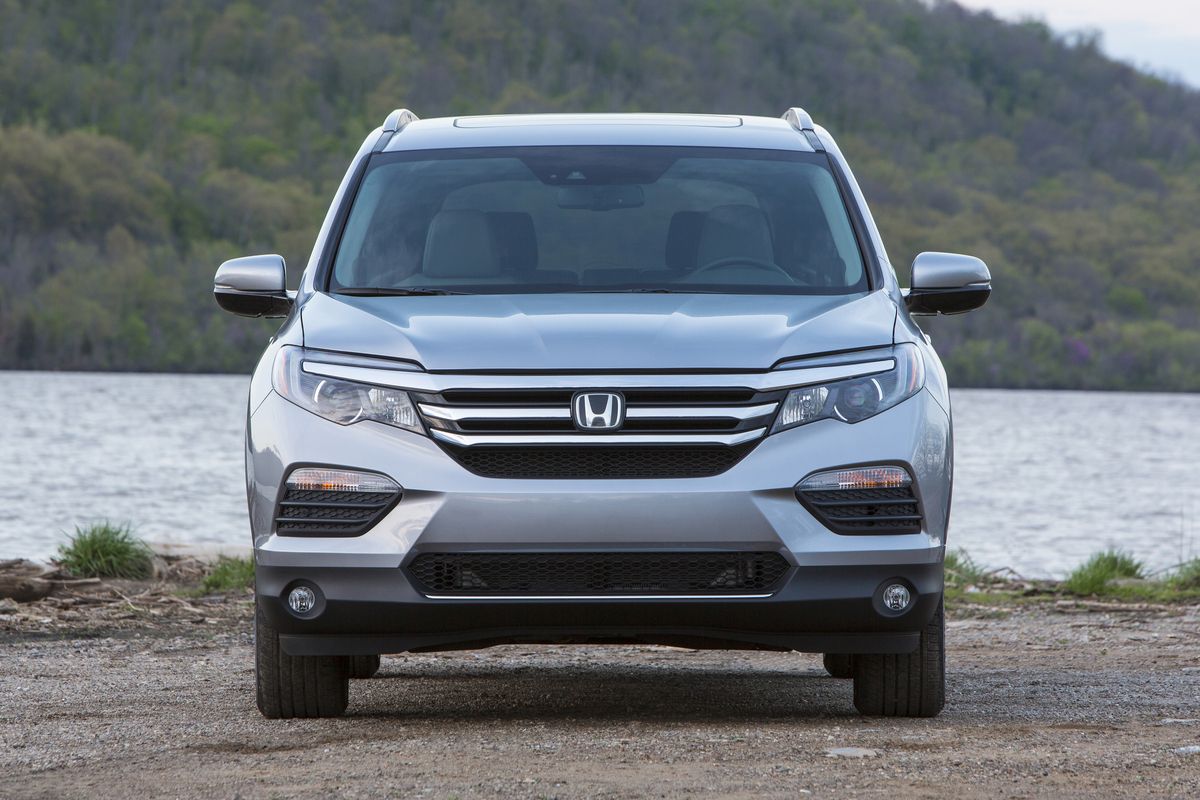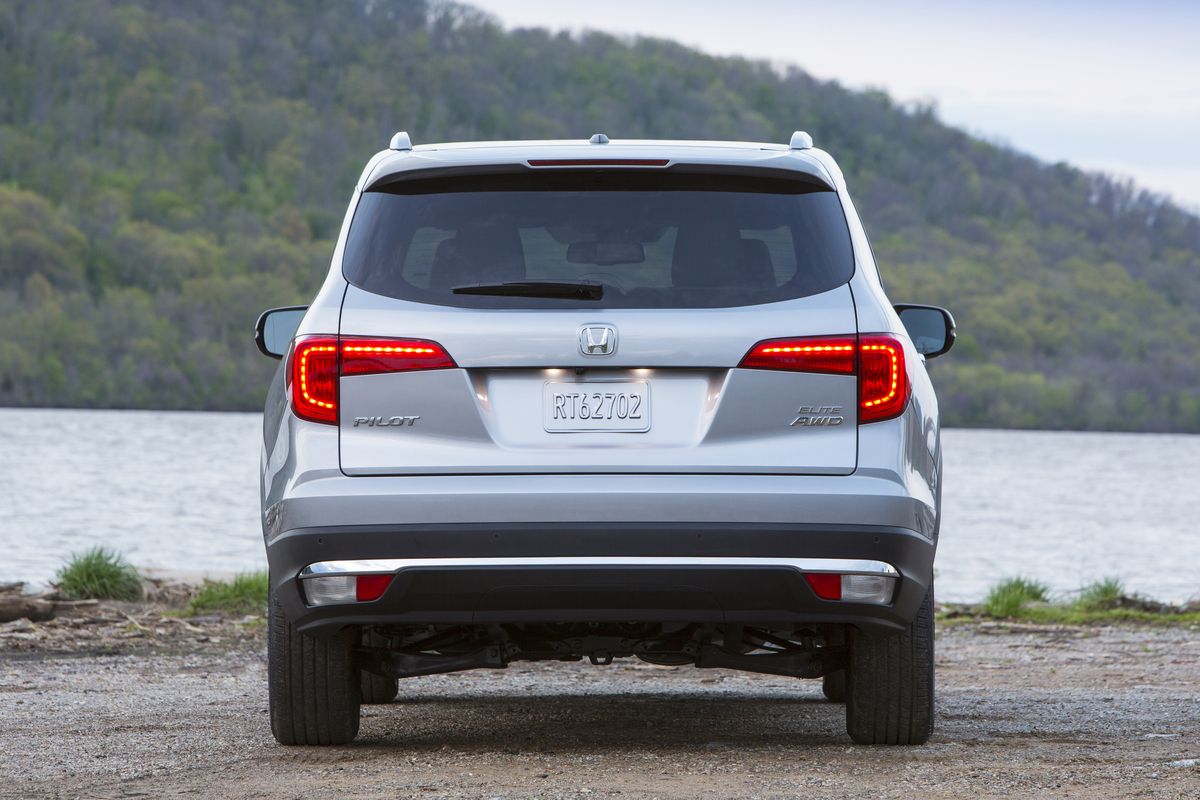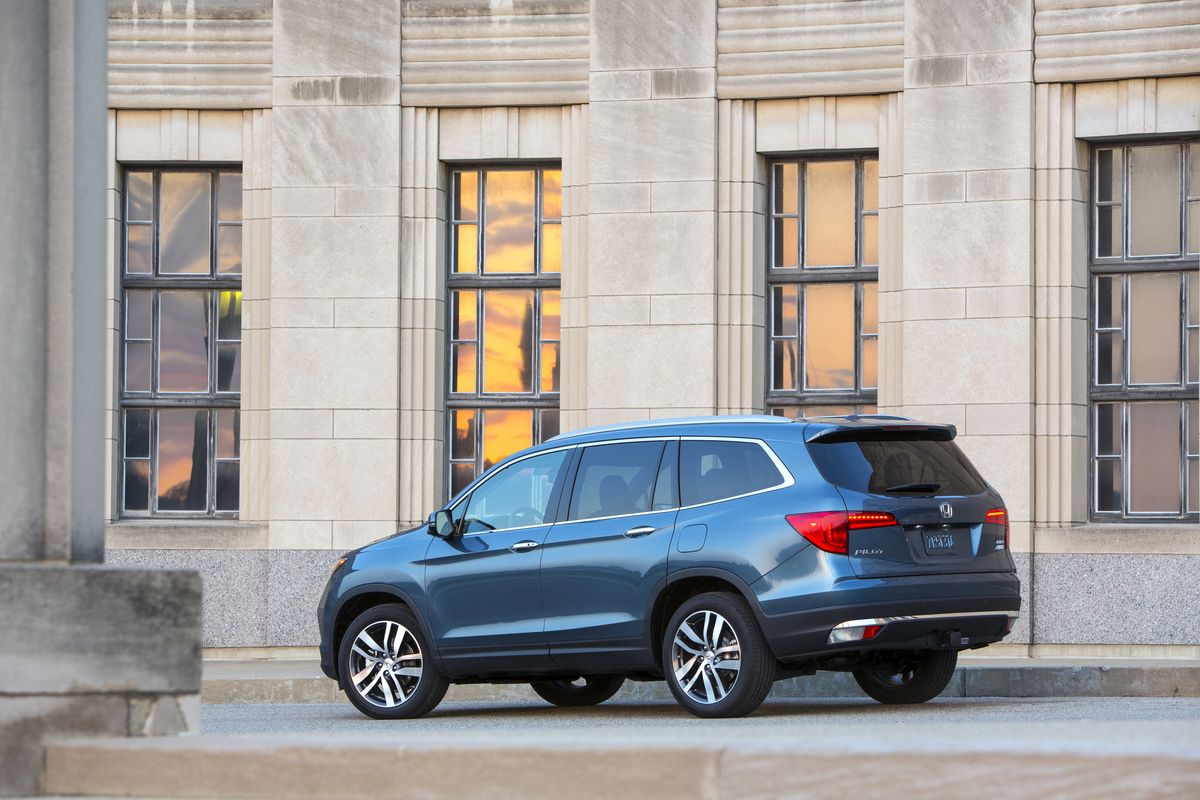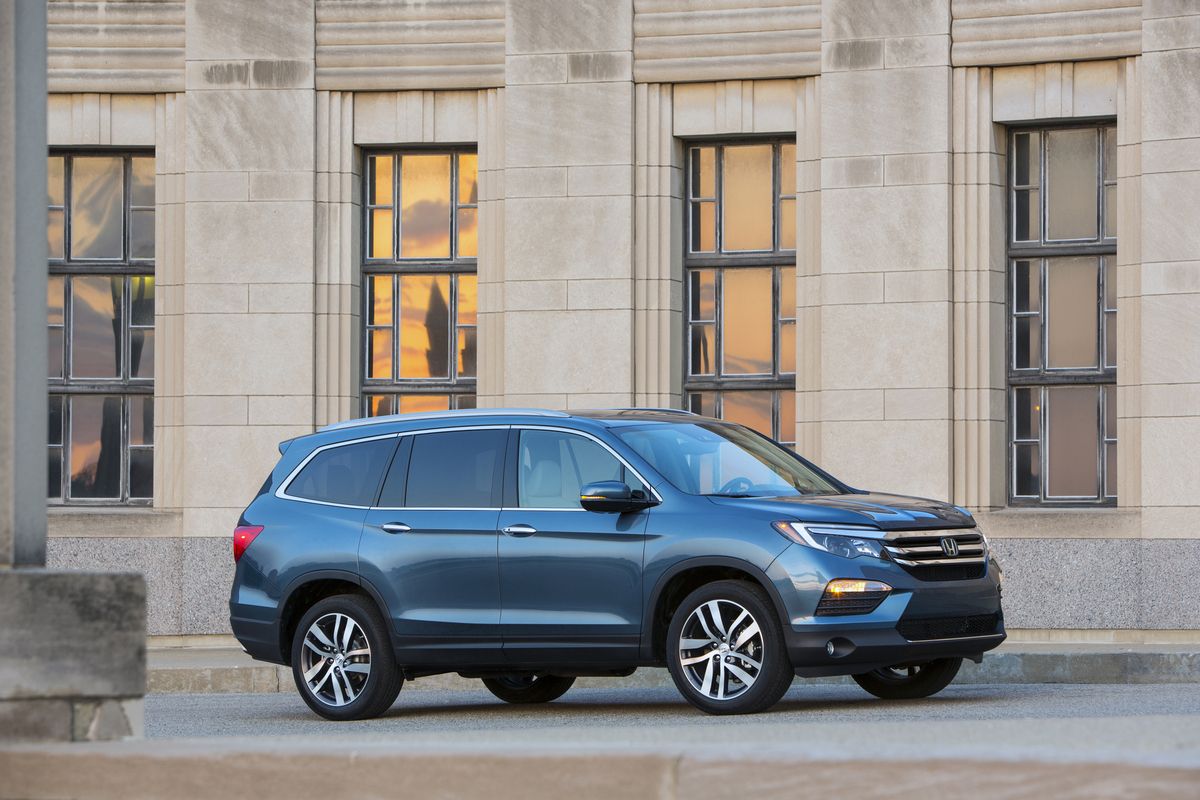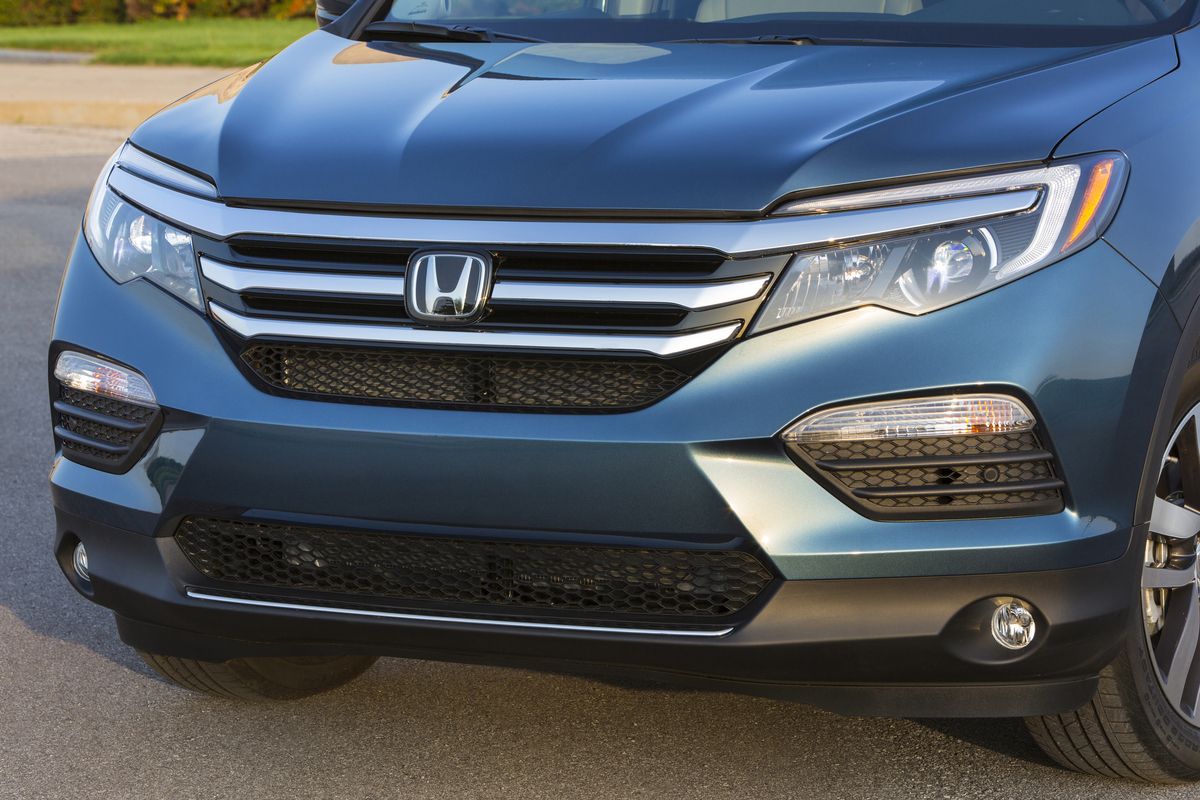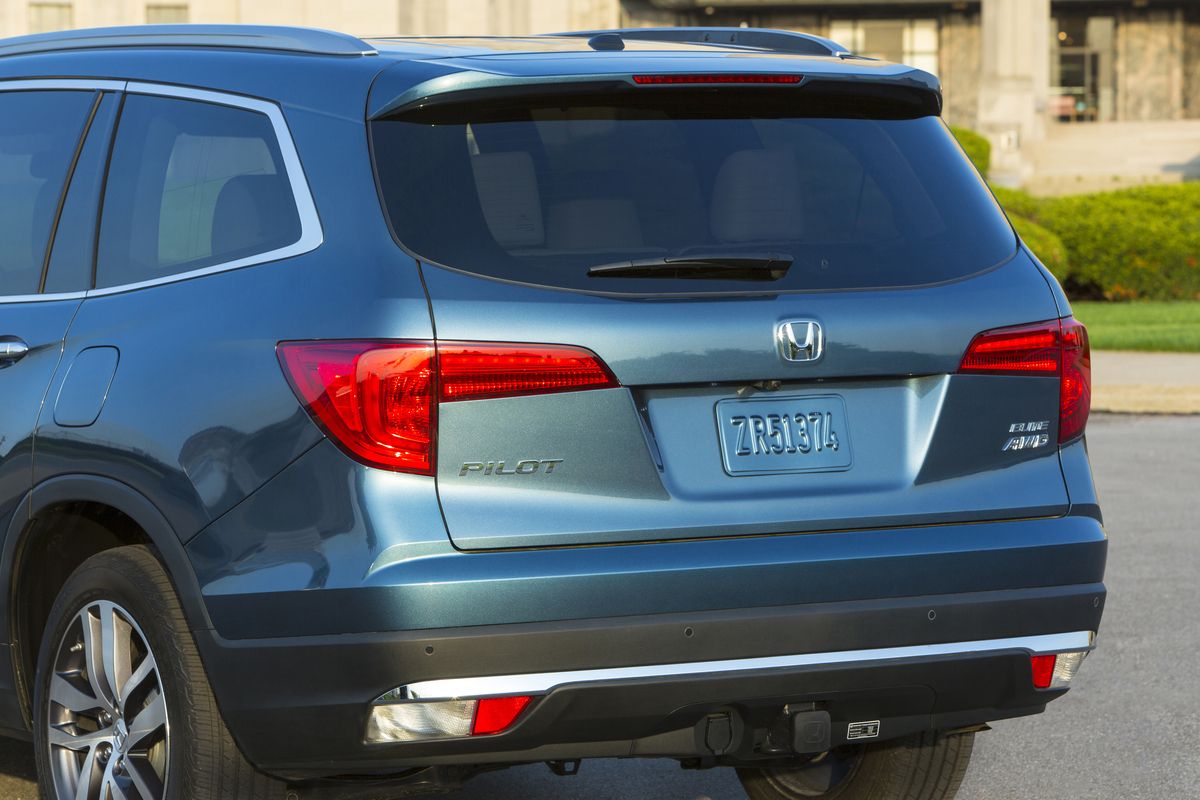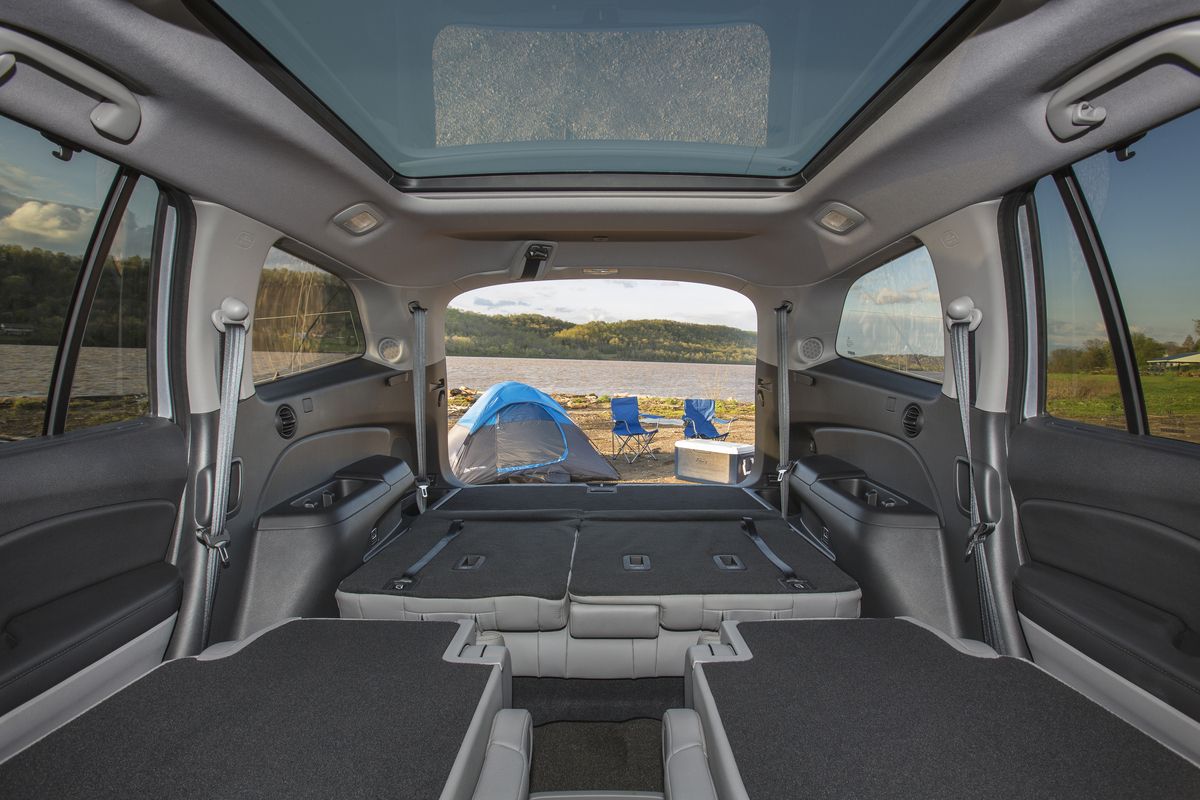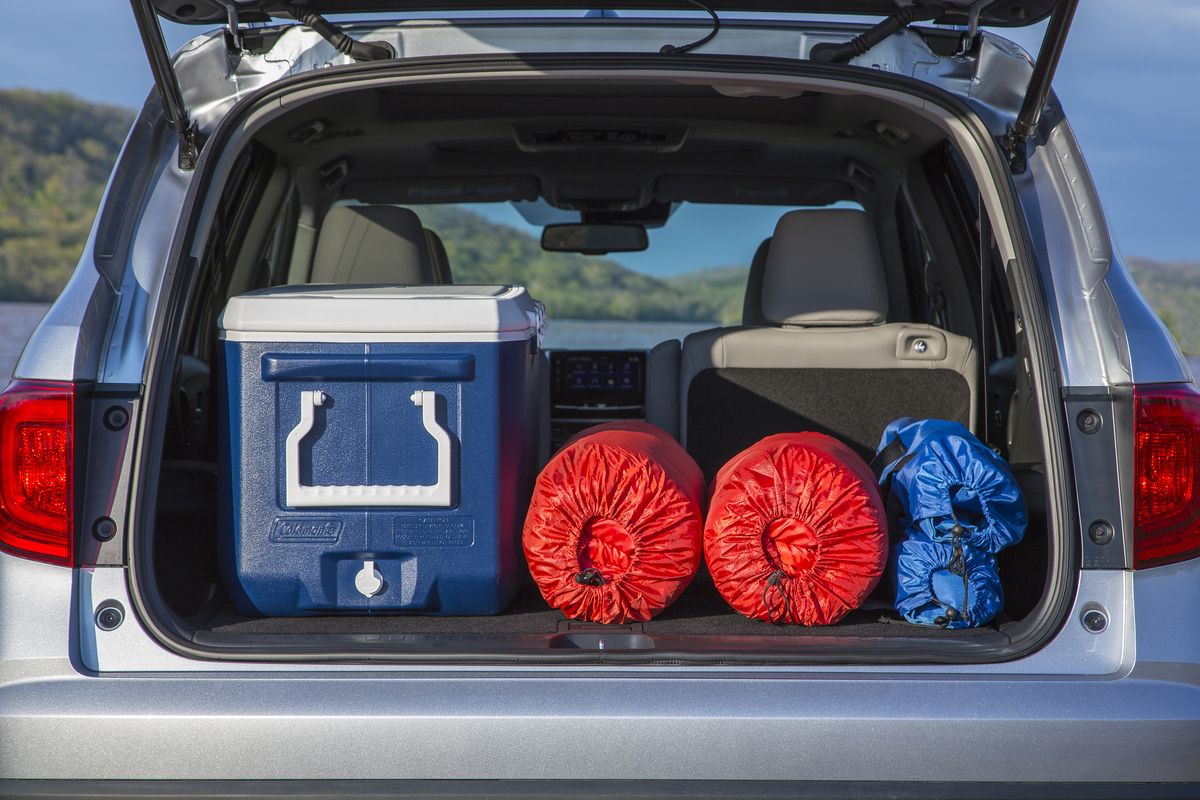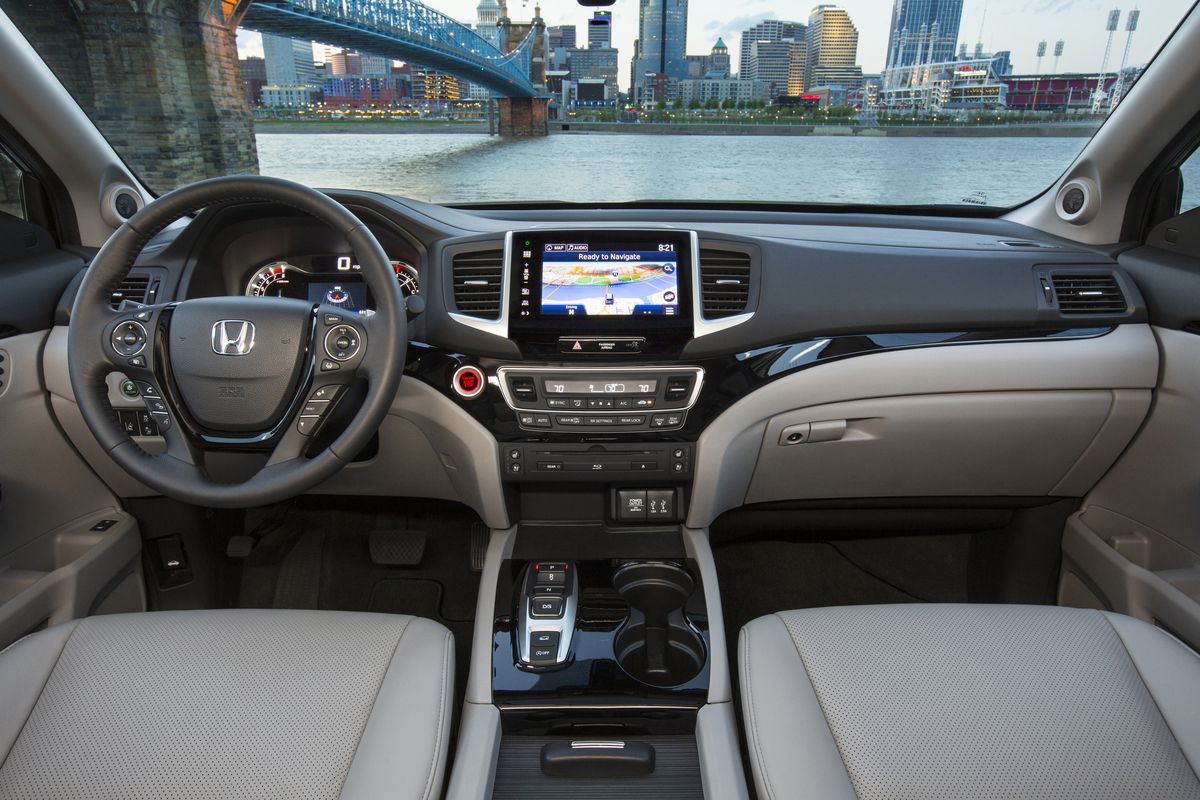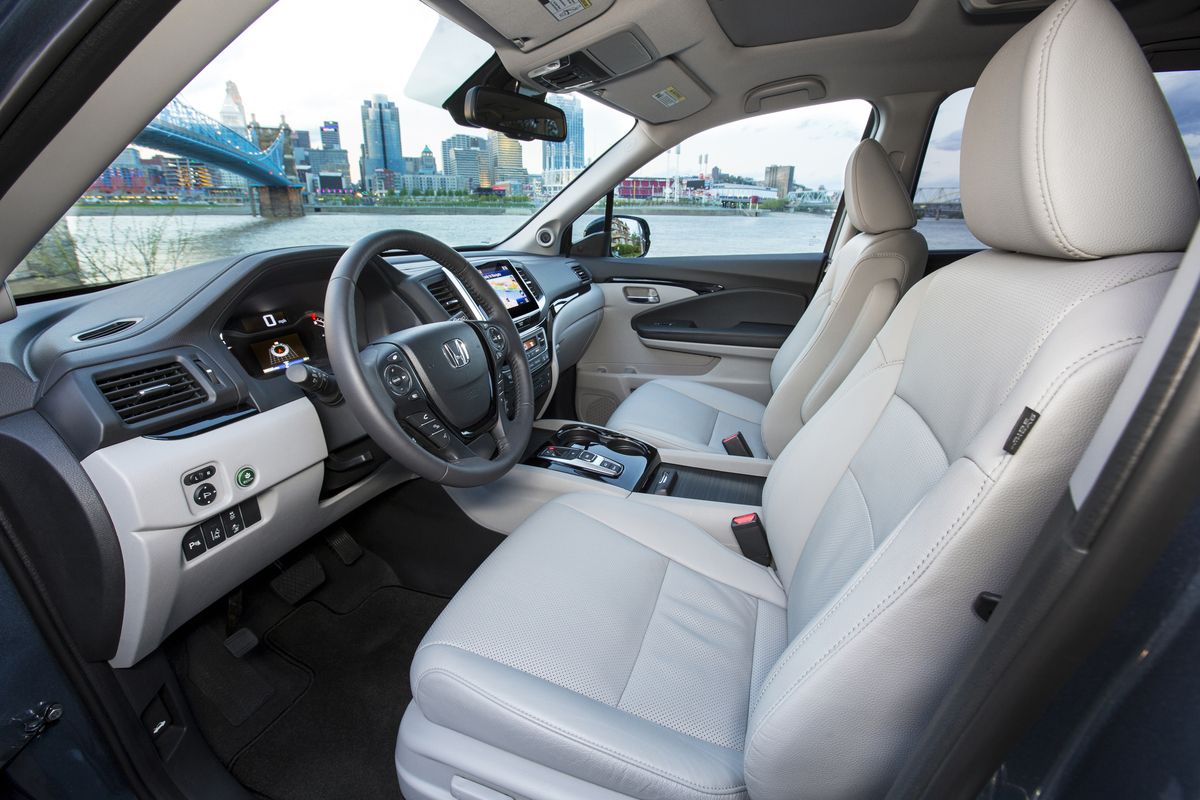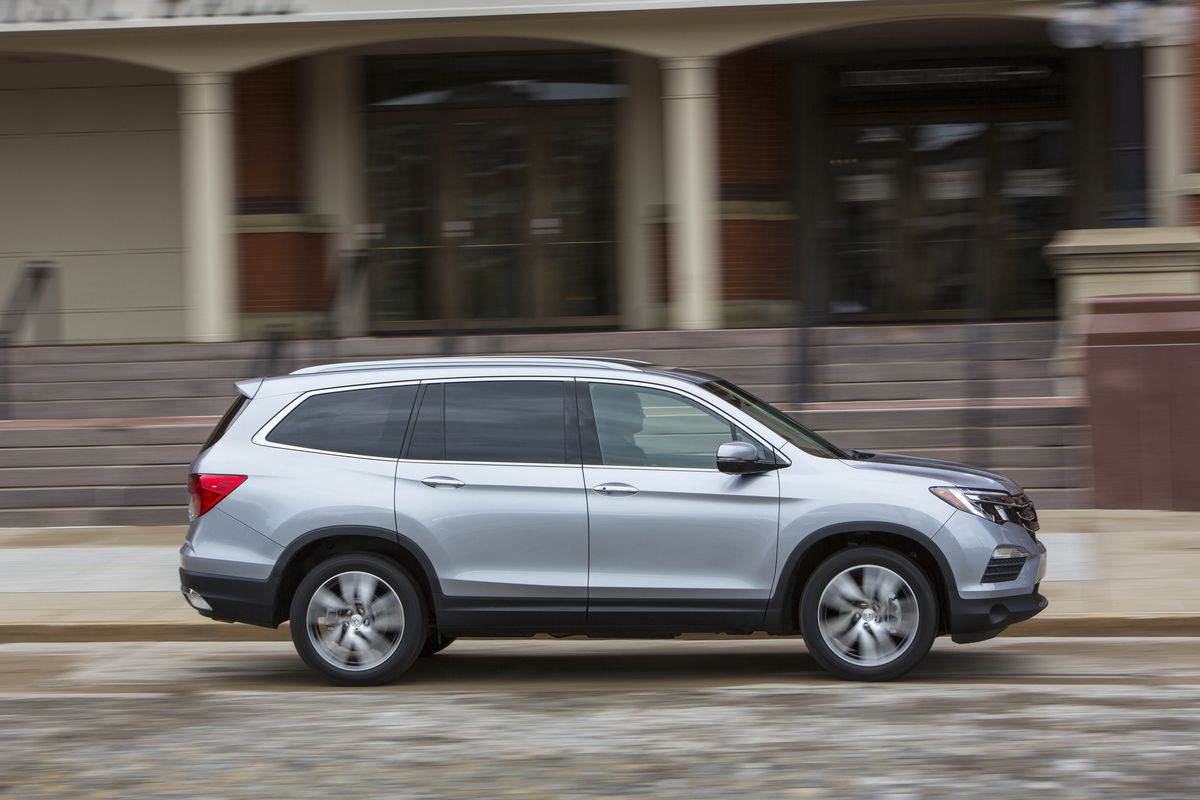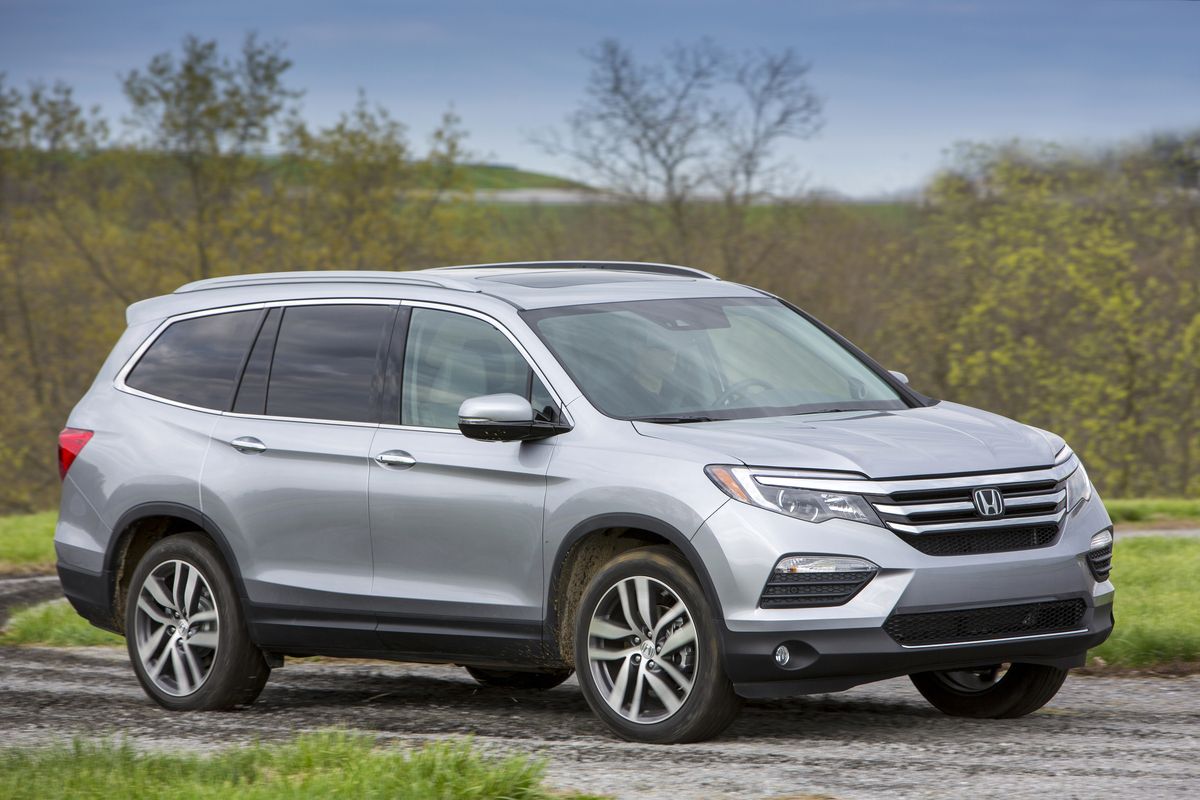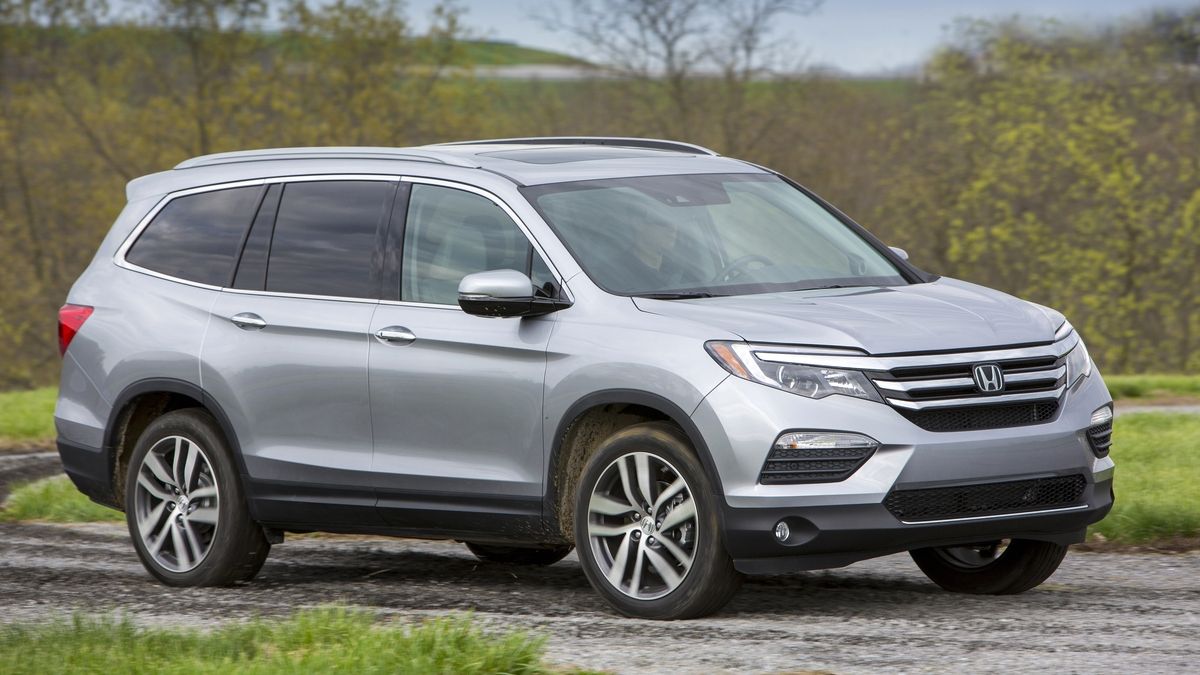The "SUV->ke145 or minivan"->ke1149 argument is a perennial one when it comes to vehicles used for moving mass quantities in the suburbs. Minivans would appear to hold an advantage when it comes to passenger and cargo capacity, as well as being easier to drive, but the new-for-2016 third-generation Honda Pilot could singlehandedly tip that balance in favor of the sport-utes.
The Pilot->ke1876 has matured into a high-tech full-size crossover->ke288 vehicle, with three-row seating and space for up to eight passengers. In fact, Honda->ke34 has matured the vehicle well past its throwback boxy styling and turned it into a thoroughly modern family hauler that retains the SUV-like towing capacity and bad-road capable suspension that have enabled it to hold its own against heavyweights like the Ford Explorer->ke342 and Chevrolet Tahoe->ke472 since 2002. If there's any downside to the all-new Pilot, it's that it's almost too nice to get it dirty. But does the king of the suburban crossovers really need to tackle muddy hills anyway?
Continue reading to learn more about the 2016 Honda Pilot.
2016 Honda Pilot Review
- Make: Array
- Model: 2016 Honda Pilot Review
- [do not use] Vehicle Model: Array
Exterior
Say goodbye to the box. The formerly brick-shaped Pilot now sports a silhouette reminiscent of the compact CR-V. A stronger family resemblance suits the Pilot well, and it's a handsome blend of Honda's vehicles. The bold three-bar grille and LED-accented headlights are similar to the Accord, while the angular wagon-back silhouette is instantly reminiscent of the CR-V. In photos the Pilot could be mistaken for a CR-V, in fact; the character creases down the body sides, wheel design and taillight design are all similar.
To highlight the high-tech aspect of the vehicle, LED taillights and available LED headlights are offered. In person, of course, the Pilot is big--three and a half inches longer than its predecessor, to be specific. Though the sheet metal masks its size well, it's obvious from street level that this is a full-size vehicle. In spite of this, curb weight is down by 300 pounds over the previous Pilot.
Interior
The high-tech interior could serve as a reminder that Honda spawned Acura. A mixture of durable materials and shiny piano-black trim is used. Most noticeable is the lack of a conventional shifter; the transmission is controlled by push buttons on the console. Honda uses the extra space to provide space to store cell phones and a large roll-top center cubby. The console itself is massive, big enough to hold a full-size iPad, and the cover serves as a second tray for small items.
On the center stack, a smooth eight-inch capacitive touch-screen controls ancillary functions via an Android-style interface. There's an integrated navigation system with a fancier, better-resolution display as well. Honda has improved the Display Audio system to make phone connectivity easier, but the full touchscreen can still be a little bit distracting. Third-row seating is accessed by a one-touch slider on the second-row seats on uplevel models. Second-row seats can be heated as well. The third-row seats are reasonably spacious, and a large group will be quite comfortable on a long-ish road trips. Honda says there's space for an 82-quart cooler behind the rear seats with all three rows in place, thanks to the additional body length.
The Pilot knows that passengers have to be kept occupied, as well. Up to five USB outlets are available, as well as a 115-volt household outlet for video game consoles and the like. A Blu-Ray entertainment system is also available for backseat passengers.
Drivetrain
The Pilot is powered by a 3.5 liter V6. As a member of Honda's EarthDreams powertrain series, this SOHC engine features direct fuel injection and Variable Cylinder Management for freeway fuel savings. That doesn’t stop it from producing 280 horsepower, of course. The engine operates with an eye toward frugality rather than raw displays of power, so throttle response and kickdown are gentle. A six-speed automatic transmission is standard. Honda also offers a new nine-speed autobox whose additional cogs provide greater engine flexibility in a wide range of driving environments. The nods toward efficiency pay off with good economy for this vehicle's size: 20/27mpg in two-wheel drive Pilots, and 19/26 with all-wheel drive.
When things get slippery, the all-wheel drive Pilot uses a torque-vectoring system to keep power and the vehicle balanced. Engine power is constantly balanced front to rear and left to right on the rear axle. Honda's Intelligent Traction Management is also included; this system, like similar systems used by Jeep and Land Rover, enables the Pilot to adapt to certain road surfaces at the push of a button, with operating modes set up for sand, snow and mud. It's a sophisticated system, and the Pilot with all-wheel drive feels supremely confident on the road, and definitely falls into the "drives small" category. Honda's electronic power steering and handling that's responsive without being twitchy make the Pilot easy to drive even for drivers who are uncertain about its size.
Safety
It should come as no surprise that the Pilot is a top safety pick. Honda has long advocated occupant safety in its cars and SUVs, and the Pilot gets five-star overall ratings from NHTSA and IIHS. Multiple-threshold front airbags, vented side bags and side-curtain airbags for all three rows are standard. Available equipment includes the LaneWatch lane departure assist, a blind spot warning system with cross-traffic alert, and a multi-angle backup camera. A collision-mitigating automatic braking system with forward collision warning is something you've probably seen before, but Honda's road departure mitigation is all new.
Pricing
The Pilot offers five trim levels for a wide range of price options. The Pilot LX starts at $30,145 for a two-wheel drive and $31,945 for all-wheel drive. Next up is the EX, at $34,380 for two wheel drive and $33,580 for all-wheel drive. The Pilot EX-L stickers for $37,855 for two-wheel drive, and $37,055 for the all-wheel drive version. Things take a turn for the luxurious with the $41,170 Touring which gets the nine-speed automatic as standard equipment, as well as a DVD rear-seat entertainment system, upgraded sound system and 20-inch wheels. At the top of the lineup is the Pilot Elite, which starts at $46,570 and includes heated front and rear seats, unique 20-inch wheels, a panoramic glass roof and a heated steering wheel, among other luxury equipment.
Competition
Ford Flex
The Flex is the most carlike of the large crossovers, with squared-off, station wagon-ish lines and a road-trip friendly interior that includes an optional rear-seat cooler. With the addition of the 365-horse 3.5 liter EcoBoost turbocharged V6, the Flex moves out nicely and returns respectable fuel economy.
Read our full review on the Ford Flex here.
Chevrolet Traverse
In terms of size and design, the Traverse and Pilot are natural enemies. Chevy's take on the big crossover makes it easy to get into the spacious third row and offers a 288-horsepower 3.6 liter V6 engine.
Read our full review on the Chevrolet Traverse here.
Dodge Durango
At the opposite end of the three-row spectrum is the Dodge Durango, which is one of the few vehicles in this class that's still a truck at heart. The Durango's available with a choice of V6 or V8 power, and even the 295-horse V6 will tow up to 6400 pounds and has a 600-mile range on a single tank.
Read our full review on the Dodge Durango here.
Conclusion
The Pilot's makeover is complete, and it's like a totally different vehicle. Those upsized-CR-V looks belie a cutting-edge family hauler with a surprising amount of technology. With its massive touchscreen and pushbutton transmission, the Pilot feels like the crossover of the future (yes, I know pushbutton transmissions existed in the 1950s). It's as much go as show, with a powerful and efficient V6, comfortable seating and plenty of space all around.


